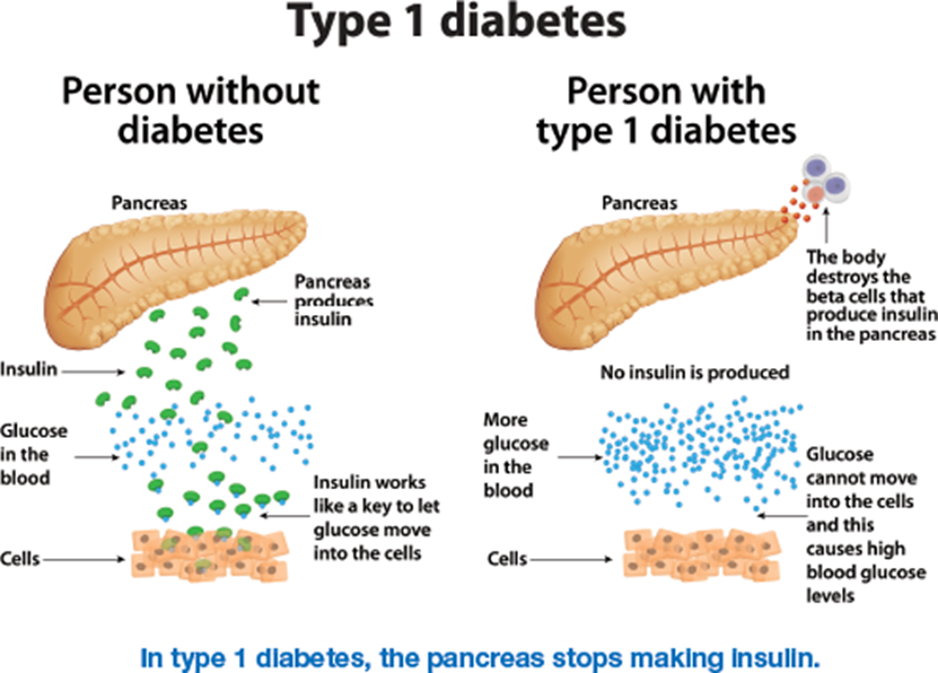Type 1 vs. Type 2 Diabetes, Please Explain the Difference!

Type 1 Diabetes
Type 1 diabetes is an autoimmune condition. This means that your immune system is activated to destroy cells in the pancreas, which produces insulin. Insulin is a hormone that turns sugar into energy in our bodies to keep us alive. We do not know what causes this autoimmune reaction. Type 1 diabetes is not linked to modifiable lifestyle factors. There is no cure, and it cannot be prevented.
People with Type 1 diabetes depend on insulin every day of their lives to replace the insulin the body cannot produce. They must test their blood glucose levels several times throughout the day.

Type 2 Diabetes
Type 2 diabetes is a condition that develops over a very long period (years). During this time, the body becomes resistant to the normal effects of insulin, and gradually, the pancreas reduces the amount of insulin it produces. As a result of this, the pancreas, in the early days, responds by trying to produce more insulin to try and keep the blood glucose levels in range. Because the pancreas has been working overtime for such a long period, by the time a person is diagnosed with type 2 diabetes, they have most likely lost 50-70% of the insulin production cells in their pancreas.
The condition has strong genetic and family-related (non-modifiable) risk factors and is often associated with modifiable lifestyle risk factors. We do not know the exact genetic causes of type 2 diabetes. People may be able to significantly slow or even halt the progression of the condition through changes to diet and increasing physical activity.
Therefore over time, many people with type 2 diabetes will also need tablets and some may eventually require insulin. It is important to note that this is normal, and taking tablets or insulin as required can result in fewer long-term complications.

So, there you have it
Type 1 diabetes is a genetic condition that cannot be prevented and requires medication to be managed. In contrast, type 2 diabetes is often related to lifestyle choices, and making lifestyle changes can reduce your risk of developing this condition.
It is a good idea to be screened for pre-diabetes to help you ensure you are making the healthiest choices for you - especially if you have any family history of type 2 diabetes.